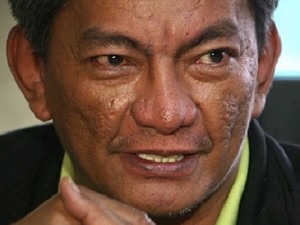LEGAZPI CITY, Philippines—“The biggest failure of the Philippines as a nation-state is its inability to tax the rich,” former Arroyo economic adviser and Albay Gov. Joey Salceda said, adding that disparity in the income growth rate between the rich and poor would persist unless government initiated drastic measures to collect taxes from the rich.
Salceda cited a National Statistical Coordination Board (NSCB) study that showed how income growth among the high-income class tended to be faster compared to that of the middle- and low-income classes because of the government’s failure to tax the wealthy.
Wide income gap
According to the NSCB report, the high-income class posted a 10.9-percent income growth rate in 2011 against the 4.3-percent income growth rate among the middle-income class.
“The inability of the state to tax the rich is the principal cause of the wide income gap between the rich and the poor,” said Salceda.
The former economic adviser stressed that consumers, especially overseas Filipino workers and employees, most of whom compose the middle class, get much of the pain in the reformed value-added tax (RVAT) and the higher sin taxes. The RVAT was enacted during the Arroyo administration.
“The rich always run away with the money since they enjoy tax exemptions, lower tax rates or have tax lawyers to fight the Bureau of Internal Revenue,” Salceda said.
He added that the trend (of an increasing gap in growth rate between the rich and the poor) confirmed an analysis by Forbes, a leading source of financial information, that the wealth of the country’s top 40 corporations accounted for 76 percent of the country’s nominal gross domestic product (GDP).
Three-fifths of GNI
Since the high-income class comprised only about 15 percent of the total population, Salceda said its share of the gross national income (GNI) is about three-fifths.
The NSCB study on the per capita income by income class in 2010-2011 showed that among the upper income class, the growth by GDP stood at 10.9 percent, GNI at 9.9 percent, and net disposable income (NDI) at 10.6 percent.
In contrast, the growth in the middle-income group was 4.3 percent by GDP, and 3.4 percent and 4.1 percent, respectively for GNI and NDI.
Salceda said the government’s failure to collect taxes from the rich could result in the loss of billions of pesos in potential tax revenues. He added that should the government turn serious in collecting these taxes from the rich, the state would be earning an estimated P320 billion in tax revenues, more than enough to finance government expenses.
